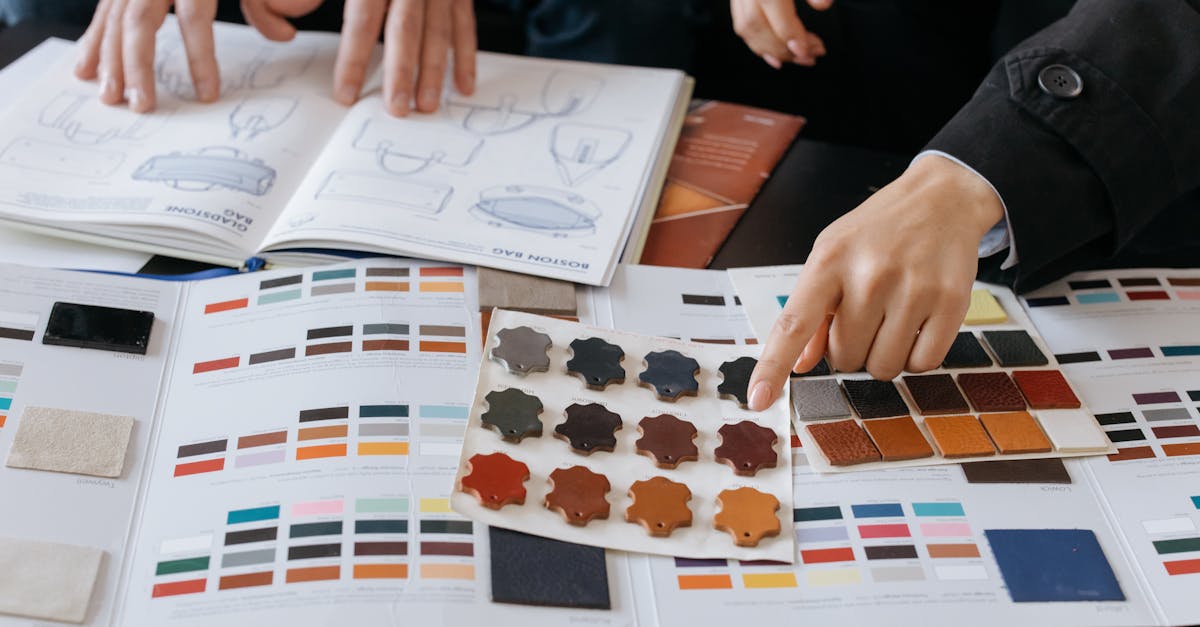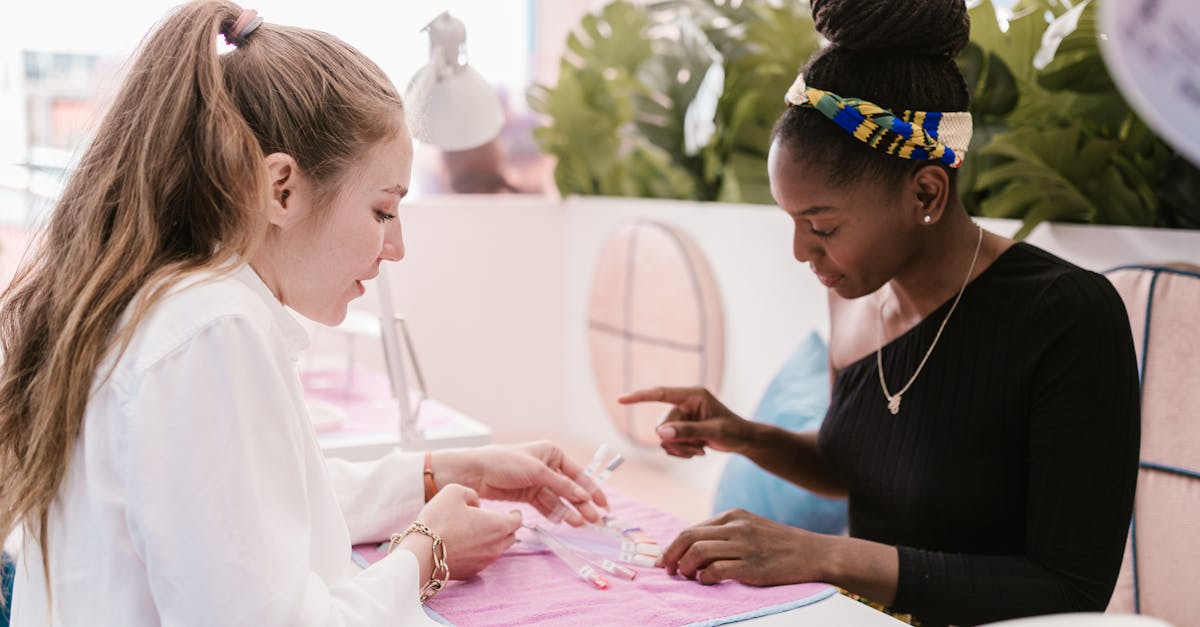This article explores the principles of Integrative Design and the significance of color choices in mixed-use spaces. It highlights how the right colors enhance social connections, boost property value, and reflect the unique identity of communities. The discussion encompasses popular color palettes that promote a welcoming atmosphere and practical techniques for applying these colors effectively in both public and private areas. Additionally, trends in current design will be examined, showcasing how innovative materials and sustainability practices shape a vibrant and cohesive environment for residents and visitors alike.
Current Trends in Home Painting and Remodeling
Homeowners are increasingly looking for ways to rejuvenate their living spaces, and current trends in painting and remodeling play a significant role in this transformation. A fresh coat of paint can do wonders not only for aesthetics but also for mood and functionality. As styles evolve, understanding what resonates with today’s homeowners is essential for creating inviting, modern environments.
From embracing bold color choices to integrating sustainable materials in remodel projects, the landscape of home design has never been more exciting. Popular colors such as earthy tones and vibrant accents are making waves, reflecting a desire for comfort and connection to nature. Techniques like color blocking and the use of innovative textures are enhancing interiors, while outdoor spaces are being treated with the same care as interiors, recognizing their importance in today’s lifestyle.
Staying informed about these trends not only enhances personal spaces but can also increase property values, highlighting the importance of embracing current design practices in home improvement projects.

| Feature | Details |
|---|---|
| Welcoming Color Palette | Utilize warm shades such as soft yellows and peaches to create a friendly atmosphere for visitors. |
| Neutral Bases | Implement neutral tones like greys and whites to provide a versatile background that complements various design elements. |
| Accent Colors | Incorporate vibrant accent colors such as turquoise or coral to draw attention and energize spaces. |
| Nature-Inspired Hues | Emphasize greens and earth tones to create a calming environment that connects occupants with nature. |
| Lighting Effects | Consider how natural and artificial lighting will impact color perception, enhancing or softening tones. |
| Community Engagement | Choose colors that reflect the local culture and history to foster a sense of place and encourage interaction. |
| Safety and Visibility | Select high-contrast colors in areas requiring safety to improve visibility and awareness. |
| Seasonal Variability | Adapt colors seasonally to keep the environment fresh and appealing throughout the year. |
Current Trends in House Painting and Remodeling
The art of house painting and remodeling has evolved significantly, influenced by contemporary lifestyles and design philosophies. Homeowners today seek not just aesthetic appeal but sustainable practices and functionality in their living spaces. This article delves into the current trends in painting and remodeling, providing insights into popular colors, innovative materials, and beneficial techniques that resonate with those looking to enhance their homes.
Popular Color Trends
Earthy Tones and Neutrals
One of the most notable trends in home painting is the move towards earthy tones and neutral colors. Shades such as soft beiges, warm greys, and muted greens create a sense of calm within a home, aligning with the increasing demand for wellness-focused environments.
- Beige: A versatile color that complements various styles, making spaces feel warmer and inviting.
- Soft Grey: Often used as a modern alternative to white, it adds depth and sophistication without overwhelming other design elements.
- Muted Greens: Colors like sage and olive bring a touch of nature indoors, promoting feelings of tranquility.
Bold Accent Colors
While neutrals dominate the primary color palette, bold accent colors are making their presence known, especially in smaller doses. These colors can inject personality and flair into spaces without overpowering the overall design.
- Vibrant Blues: Ideal for accent walls or furniture, deep blues can create a dramatic contrast against lighter tones.
- Rich Reds: Used sparingly, this color can evoke passion and warmth, often implemented in dining areas or living rooms.
- Mustard Yellow: This cheerful shade can enhance a space’s vibrancy and is often found in kitchens or home offices.
Innovative Painting Techniques
Textured Finishes
Textured finishes are gaining popularity for adding dimension and interest to walls. Techniques such as sponge painting, rag rolling, or the use of textured paints allow homeowners to create unique effects that are both eye-catching and personalized.
Ombre and Gradient Effects
The ombre technique, transitioning from one color to another, adds depth and elegance to spaces. This trend is particularly favored in bedrooms and children’s rooms, allowing for creative expression. Gradient walls can also serve as a beautiful backdrop for artwork or decorative elements.
Eco-Friendly Paint Options
With a growing focus on sustainability, eco-friendly paints are becoming a sought-after option for homeowners. These paints are typically low in volatile organic compounds (VOCs), which minimizes indoor air pollution and contributes to a healthier living environment.
Types of Eco-Friendly Paints
- Natural Paints: Made from natural ingredients such as plant resins and oils, these paints are biodegradable and safe for both occupants and the environment.
- Low-VOC Paints: These products reduce the emission levels commonly associated with traditional paints, making them a healthier choice for interior spaces.
- Recycled Paints: Utilizing leftover paint from various sources, recycled options provide a sustainable solution while being cost-effective.
Functional Remodeling Trends
Open Concept Living Spaces
Open concept designs continue to reign as a popular choice for modern homes. Removing walls between kitchens, dining areas, and living rooms creates a more fluid and functional environment. This trend not only enhances connectivity but also maximizes natural light, making spaces feel larger and more inviting.
Dedicated Workspaces
With the rise of remote work, the demand for dedicated home offices has surged. Homeowners are looking to create functional work environments that separate work from personal life. This shift emphasizes the importance of well-designed spaces that foster productivity.
Materials with a Purpose
Innovative Flooring Solutions
The choice of flooring is crucial in remodeling projects. Homeowners are gravitating toward materials that are not only visually appealing but also durable and easy to maintain.
- Bamboo Flooring: An eco-friendly option that is both sustainable and stylish, bamboo is becoming a popular choice due to its strength and resilience.
- Luxury Vinyl Plank (LVP): Simulating natural wood or stone, LVP is waterproof, scratch-resistant, and highly versatile, making it ideal for any room.
Smart Home Materials
Technology continues to influence remodeling trends. Smart home materials, such as integrated lighting systems and energy-efficient appliances, are increasingly being incorporated into home designs. This integration not only enhances convenience but also promotes energy conservation.
Outdoor Living Spaces
Creating Functional Exteriors
As homeowners look to extend their living space outdoors, the design of patios, decks, and gardens has become a critical aspect of remodeling. Functional outdoor spaces that accommodate gathering, cooking, and relaxation are highly sought after.
Innovative Landscaping Solutions
In addition to hardscaping elements such as patios and pathways, landscaping trends are also shifting toward sustainability. Native plants, edible gardens, and xeriscaping are popular choices that promote biodiversity and reduce water usage.
Tips for Successful House Painting and Remodeling
- Plan Ahead: Outline your objectives and budget before starting the project to ensure that all decisions align with your vision.
- Choose Colors Wisely: Test paint samples at different times of the day to see how natural light affects the color in your space.
- Incorporate Natural Elements: Integrate plants and natural materials to enhance the connection between indoor and outdoor spaces.
Embracing current trends in house painting and remodeling allows homeowners to transform their spaces into vibrant, livable environments. By incorporating popular colors, innovative techniques, and sustainable materials, it is possible to create a home that is not only beautiful but also functional and environmentally responsible.

Transform Your Home Today
Experience the beauty of a freshly painted and remodeled space! Our expert team is ready to revitalize your home, boosting its value and aesthetic appeal. Contact us now to discover how our tailored solutions can enhance your living environment and reflect your personal style!
Current Trends and Tips in Home Painting and Remodeling
Practical Tips for Home Painting
- Choose the Right Color Palette
- Use Quality Paint
- Consider the Finish
- Prep Like a Pro
- Utilize Techniques for Textured Walls
- Plan for Lighting
Trends in Home Remodeling
- Focus on Sustainability
- Open Concept Designs
- Smart Home Integration
- Multifunctional Spaces
Frequently asked questions
Glossary of Key Terms Related to Home Painting and Remodeling Trends
- Color Palette
- A set of colors used together in a design project to create a cohesive look and feel.
- Accent Wall
- An interior wall painted a different color or pattern to create a focal point within a room.
- Eco-Friendly Paint
- Paints formulated without harmful chemicals, promoting a healthy indoor environment and minimizing environmental impact.
- Texture Painting
- A technique that adds depth and visual interest to walls through varying applications of paint and materials.
- Remodeling
- Altering or improving a home’s structure or design, often involving renovations or upgrades to existing spaces.
- Open Concept
- A design style that removes barriers between living spaces to create a more spacious and interconnected environment.
- Smart Home Technology
- Devices and systems that enhance home automation, allowing remote control of appliances, security, and other functionalities.
- Transitional Design
- A style that blends traditional and contemporary elements, creating a balanced and timeless aesthetic.
- Lighting Fixtures
- Devices that provide illumination in a space, including chandeliers, wall sconces, and recessed lights, impacting the overall ambiance.
- Flooring Options
- A variety of materials, such as hardwood, laminate, tile, or carpet, used to cover the floors in a home, each offering different aesthetics and functionalities.
Integrative Design: Color Choices for Mixed-Use Spaces plays a crucial role in shaping environments that foster community and engagement. By understanding the psychology of color and its impact on inhabitants, designers can create appealing, functional spaces that resonate with diverse audiences. Encouraging the use of vibrant and complementary color palettes not only enhances aesthetic appeal but also improves the overall well-being of residents and visitors. As readers reflect on the insights shared, they are encouraged to apply these principles in their own projects, transforming spaces into vibrant hubs that promote interaction and enrich community life.
Recommendations for Integrative Design: Color Choices for Mixed-Use Spaces
1. Emphasize Community Identity
Color choices in mixed-use spaces should reflect the unique identity of the community. This can enhance the sense of place and foster social connections.
- Research Local Aesthetics: Explore historical and cultural color palettes that resonate with the area’s heritage.
- Engage Local Artists: Involve local artists to create murals or installations using colors that celebrate community identity.
- Experiment with Textures: Combine colors with various textures to add depth and interest, creating a welcoming environment.
2. Foster Interaction through Color
Creating spaces that encourage interaction can be enhanced by thoughtful color selection. Visual stimulation can attract diverse groups and foster engagement.
- Use Vibrant Accents: Incorporate bold colors in common areas or outdoor environments to draw attention and invite gatherings.
- Choose Harmonious Palettes: Select complementary colors that create visual cohesion, making spaces feel comfortable yet dynamic.
- Incorporate Flexible Spaces: Design areas with movable elements in varied colors to allow tenants to personalize their environments.
3. Prioritize Wellness and Functionality
Select colors that promote wellness and improve mood, considering both functionality and aesthetics.
- Opt for Calming Tones: Soft, muted colors in relaxation areas like lounges can create a calming atmosphere.
- Utilize Natural Light: Maximize daylighting in color choices; lighter colors can enhance brightness and perception of space.
- Employ Biophilic Design: Incorporate nature-inspired colors and patterns to establish a connection to the outdoors, fostering well-being.
Transform Your Home Today!
Ready to revitalize your living space? Discover the benefits of our top-notch painting and remodeling services that turn your vision into reality. Our expert team ensures high-quality results, enhancing both your home’s aesthetic and value. Don’t wait any longer to create the home of your dreams; reach out to us today!
Sophia Torres is the creative mind behind the most dazzling transformations at TS Painting & Restoration. With a strong background in interior design and a deep passion for tropical color palettes, she has helped hundreds of clients revitalize their spaces into vibrant and inviting environments. Born in Colombia and raised in Florida, Sophia brings a unique perspective to her work, blending Latin American influences with modern design trends.
Sophia’s vision of color goes beyond the conventional. She is known for her ability to create bold and unexpected combinations that reflect Florida’s natural beauty. Her focus on color psychology and strategic use of tones allows her to transform any environment, making each project a showcase of her clients’ personal style. On her blog, she shares practical tips on how to choose colors that not only beautify but also enhance emotional well-being and create harmony in the home.
When not working, Sophia enjoys exploring art galleries, experimenting with DIY projects, and finding inspiration in Florida’s lush landscapes. For her, design isn’t just about aesthetics; it’s about creating spaces that tell a story, reflect the identity of those who live there, and evoke positive emotions. At TS Painting & Restoration, Sophia is committed to helping homeowners discover how colors can transform their homes into true havens of tranquility and beauty.


